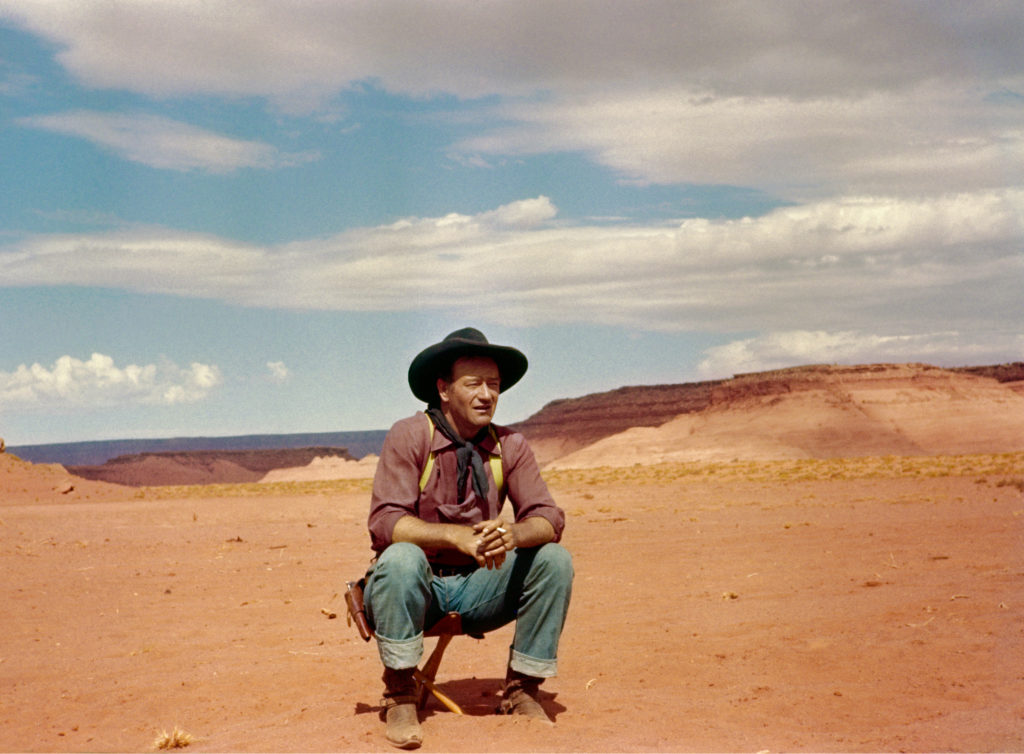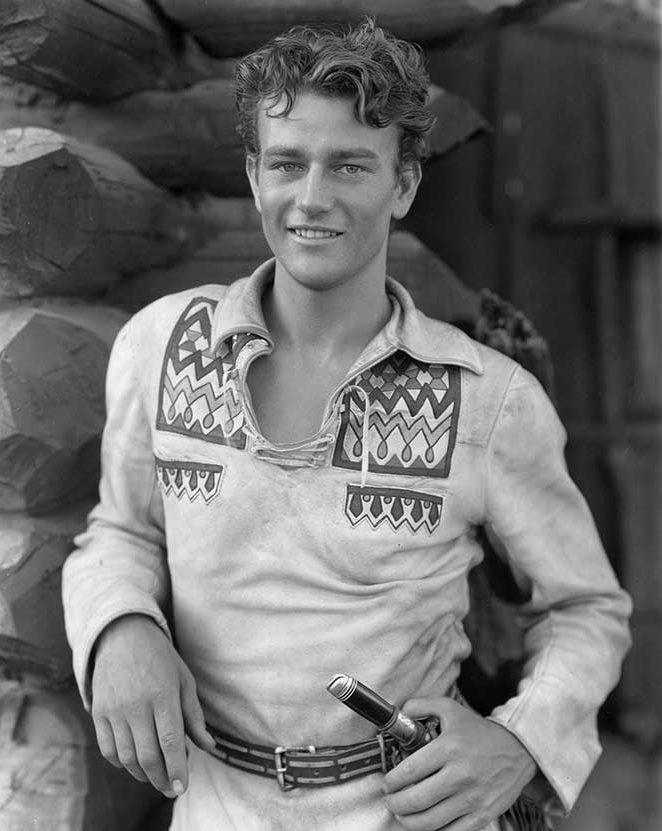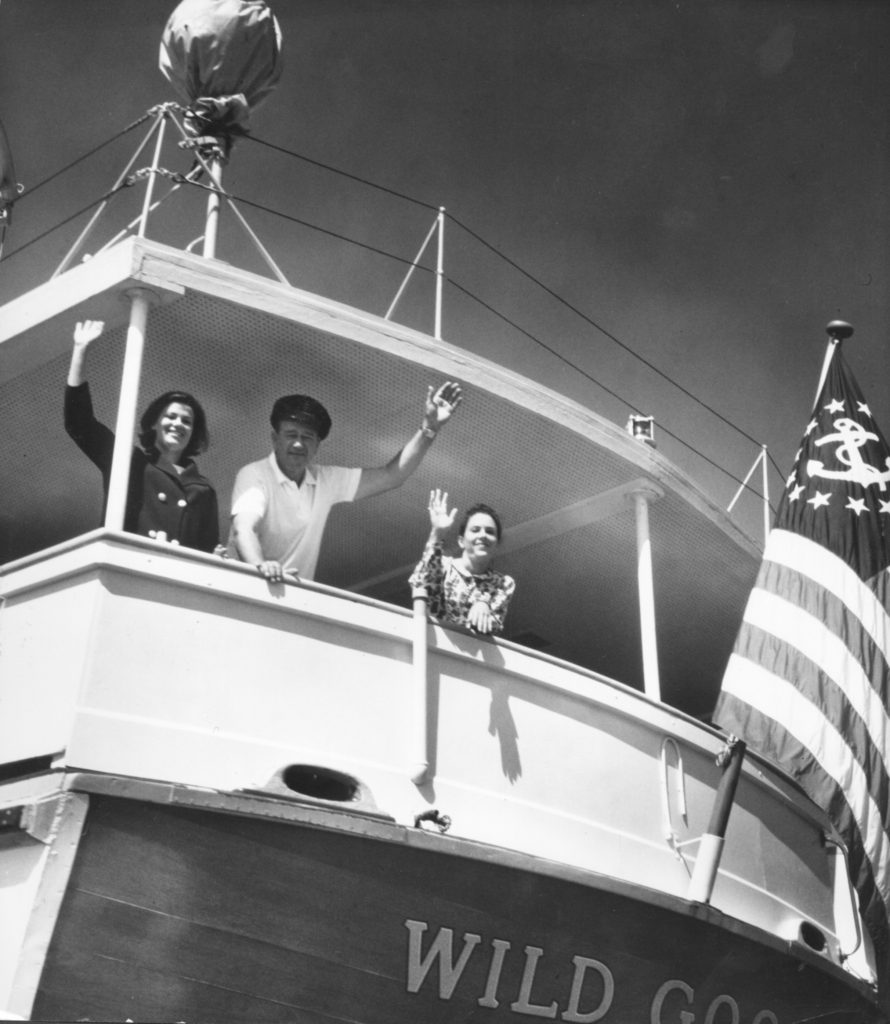
On Location with John Wayne follows the actor from rising star to Hollywood supernova.
Written by Jenn Thornton
Not too long after starting as a prop man at Fox, Marion “Duke” Morrison had a new name, and a new game—actor. The strapping 6’3” upstart with some mean stunt skills showed a charisma and athleticism that saw him cast in a string of early B flicks.
Wayne worked hard at crafting his on-screen persona, picking up fighting, horse riding and roping techniques from stuntmen, like the legendary rodeo champ Yakima Canutt. To learn acting, Duke turned to character actors like Paul Fix, who is credited with helping Duke develop his signature walking style, as well as 1920s silent film star Harry Carey Sr., whose work Wayne studied on the advice of his mentor, director John Ford. Wayne was a sponge. He was a natural, too. With his athletic background and physicality, Duke proved a valuable player for the studios. “My dad was very young then, and he was a big guy, but he was very catlike,” Patrick Wayne said in the book John Wayne: The Genuine Article. “He could move like the wind and had that incredible worth ethic. Also, his balance was incredible. He could handle a horse as well as any stuntmen at the time.” His talent propelled him to bigger and better roles.

If Raoul Walsh’s The Big Trail (1930) was John Wayne’s breakout (his performance earned him a contract at Fox), then John Ford’s Stagecoach (1939) was his breakthrough. To the then 30-year-old working actor’s surprise, the latter film was a hit and suddenly “John Wayne” was a household name. As Duke put it, “At an age when most leading men are staring down the wrong side of the hill, I became a star.”
One of the biggest stars to ever come out of Hollywood, at that. After Stagecoach, Wayne’s career skyrocketed. He went on to decades of classic pictures—from war films to Westerns—with some of the top directors of the day. Shockingly, it took until 1970 for Wayne to win an Oscar, for his epic portrayal of one-eyed U.S. Marshal Rooster Cogburn in True Grit (1969). While Wayne has long left us, his memory looms large, as does his likeness, as realized by Madame Tussauds Hollywood (6933 Hollywood Blvd., Los Angeles, CA, madametussauds.com/hollywood), where his wax statue is one of the many Silver Screen icons in the Country & Western Stars section of the museum.
Duke left big shoes to fill in—and all over—Hollywood, and fans can see the real thing in the Forecourt of the Stars at Grauman’s Chinese Theatre (now TCL Chinese Theatre, 6925 Hollywood Blvd., Hollywood, CA, tclchinesetheatres.com), where the actor’s footprints were placed in cement on Jan. 25, 1950. As it turns out, to mark the actor’s film Sands of Iwo Jima (1949), actual sand from the actual Iwo Jima was mixed in with the wet cement. As for Wayne’s legacy as one of Hollywood’s greatest and most enduring stars, that was cemented long ago. For more about the legacy of Hollywood—its Golden Age and today—visiting the world-class Academy Museum of Motion Pictures (6067 Wilshire Blvd, Los Angeles, CA, academymuseum.org) tops the must-do docket in LA.
Finally, tip your ten-gallon to John Wayne at his final resting place at the cemetery at Pacific View Memorial Park (3500 Pacific View Dr., Corona Del Mar, CA) in the actor’s longtime hometown of Newport Beach, where you can set sail on Duke’s personal yacht Wild Goose (cityexperiences.com), too.



